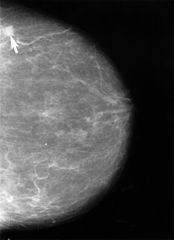Gain in Survival with Fulvestrant plus Anastrozole in Metastatic Breast Cancer
- Results showed that median overall survival improved by 7.8 months with anastrozole plus fulvestrant (median overall survival = 49.8 months) compared to anastrozole (median overall survival = 42.0 months).
- The improvement was even greater in patients with endocrine naive disease, with an absolute improvement in median overall survival of 11.9 months.
- No new safety signals were observed with longer follow-up.
Antibody–Drug Conjugate in Refractory Metastatic Triple-Negative Breast Cancer
Breast Cancer Survivors More Likely To Develop Subsequent Blood Cancers
 Dr. Marie Joelle Jabagi, PharmD, MPH
University of Paris Sud, Paris-Saclay University, Paris
Health Product Epidemiology Department
French National Agency for Medicines and Health Products Safety
Saint-Denis, France
MedicalResearch.com: What is the background for this study?
Response: Secondary hematologic malignant neoplasms that develop months or years after the diagnosis of breast cancer may be a consequence of genetic predisposition, environmental factors, previous cancer treatments or a combination of all those factors. These secondary malignant neoplasms are increasingly becoming a concern given that the population of breast cancer survivors is growing substantially. However, their frequency in real life has been poorly investigated to date.
The aims of our research were to estimate the frequency of various types of hematologic malignant neoplasm following a diagnosis of primary breast cancer among women aged 20 to 85 years in France during the past decade, and to compare it to the corresponding frequency in women of the French general population.
(more…)
Dr. Marie Joelle Jabagi, PharmD, MPH
University of Paris Sud, Paris-Saclay University, Paris
Health Product Epidemiology Department
French National Agency for Medicines and Health Products Safety
Saint-Denis, France
MedicalResearch.com: What is the background for this study?
Response: Secondary hematologic malignant neoplasms that develop months or years after the diagnosis of breast cancer may be a consequence of genetic predisposition, environmental factors, previous cancer treatments or a combination of all those factors. These secondary malignant neoplasms are increasingly becoming a concern given that the population of breast cancer survivors is growing substantially. However, their frequency in real life has been poorly investigated to date.
The aims of our research were to estimate the frequency of various types of hematologic malignant neoplasm following a diagnosis of primary breast cancer among women aged 20 to 85 years in France during the past decade, and to compare it to the corresponding frequency in women of the French general population.
(more…)Breast Cancer Risk Remains Elevated 20-30 years After Childbirth
Canadian Task Force Updates Breast Cancer Screening Guidelines
MedicalResearch.com Interview with: Dr. Moore Dr. Ainsley Moore MD, CFPC, MSc(HB), MSc(CLinEpi) CandAssociate Professor,McMaster UniversityAssociate Editor,Canadian Medical Education JournalVice-Chair, Canadian Task Force on...
After Menopause, High Body Fat Associated with Doubled Risk of Estrogen+ Breast Cancer
Women Benefit from Mammography Screening Beyond Age 75
Estrogen Receptors More Versatile and Widespread Than Previously Recognized
 Prof. Cathrin Brisken MD, PhD
ISREC, School of Life Sciences
Ecole Polytechnique Fédérale (EPFL)
CH-1015 Lausanne, Switzerland
MedicalResearch.com: What is the background for this study?
Response: Estrogen receptor signaling has been well characterized in various in vitro models, like breast cancer cell lines. Understanding estrogen receptor action in complex in vivo context is much more challenging.
We obtained elegant mouse models in which either all estrogen receptor function or specifically either the hormone dependent (AF-2) or the hormone independent (AF-1) function were ablated. Using the mammary glands from these mice we performed tissue recombination studies to discern the role of the different aspects of estrogen receptor signaling in the mouse mammary epithelium and its different cell populations.
(more…)
Prof. Cathrin Brisken MD, PhD
ISREC, School of Life Sciences
Ecole Polytechnique Fédérale (EPFL)
CH-1015 Lausanne, Switzerland
MedicalResearch.com: What is the background for this study?
Response: Estrogen receptor signaling has been well characterized in various in vitro models, like breast cancer cell lines. Understanding estrogen receptor action in complex in vivo context is much more challenging.
We obtained elegant mouse models in which either all estrogen receptor function or specifically either the hormone dependent (AF-2) or the hormone independent (AF-1) function were ablated. Using the mammary glands from these mice we performed tissue recombination studies to discern the role of the different aspects of estrogen receptor signaling in the mouse mammary epithelium and its different cell populations.
(more…)About 20% of Women With Earlier Stage Breast Cancer Progress to Metastatic Disease Within 20 Years
Breast Cancer: Gene Expression of Receptors on a Chip Can Enhance Precision Diagnosis
 Univ.- Prof. Dr. Wolfgang Schreiner
Section Biosimulation and Bioinformatics
Center for Medical Statistics, Informatics, and Intelligent Systems
Medical University of Vienna
General Hospital
WIEN / AUSTRIA
MedicalResearch.com: What is the background for this study? What are the main findings?
Response: The choice of correct individualized therapy for breast cancer depends on correct diagnosis: receptors for estrogen, progesterone and HER2 are determined routinely. However 5-10% of these routine diagnostics are inaccurate and may entail suboptimal therapy.
We have paved the way for additional diagnostics from gene expression data so as to increase precision of diagnostics. (more…)
Univ.- Prof. Dr. Wolfgang Schreiner
Section Biosimulation and Bioinformatics
Center for Medical Statistics, Informatics, and Intelligent Systems
Medical University of Vienna
General Hospital
WIEN / AUSTRIA
MedicalResearch.com: What is the background for this study? What are the main findings?
Response: The choice of correct individualized therapy for breast cancer depends on correct diagnosis: receptors for estrogen, progesterone and HER2 are determined routinely. However 5-10% of these routine diagnostics are inaccurate and may entail suboptimal therapy.
We have paved the way for additional diagnostics from gene expression data so as to increase precision of diagnostics. (more…)Cutting Out Bacon, Sausage and Hot Dogs May Reduce Risk of Breast Cancer
 Maryam Farvid, Ph.D., Research Scientist
Department of Nutrition
Harvard T.H. Chan School of Public Health
Boston, MA 02115
MedicalResearch.com: What is the background for this study? What are the main findings?
Response: Prior prospective studies on red and processed meat consumption with risk of breast cancer have produced inconsistent results.
Current meta-analysis of 15 prospective studies shows that women who eat a high amount of processed meat each day may have a higher risk of breast cancer than those who don't eat or have a low intake in their diet. (more…)
Maryam Farvid, Ph.D., Research Scientist
Department of Nutrition
Harvard T.H. Chan School of Public Health
Boston, MA 02115
MedicalResearch.com: What is the background for this study? What are the main findings?
Response: Prior prospective studies on red and processed meat consumption with risk of breast cancer have produced inconsistent results.
Current meta-analysis of 15 prospective studies shows that women who eat a high amount of processed meat each day may have a higher risk of breast cancer than those who don't eat or have a low intake in their diet. (more…)Mammograms: Minorities and Poor Less Likely To Report Barriers to Care
Patients Most Often Receive Breast Cancer Diagnosis By Phone
Disease-Free and Overall Survival Among Patients With Operable HER2-Positive Breast Cancer Treated With Sequential vs Concurrent Chemotherapy
Routine Mammography Screening Recommendations Do Not Apply To Women With History of Breast Cancer
Continued Aggressive Treatment Indicated For Younger Women with Breast Cancer Who Have Incomplete Response to Chemo
Breast and Ovarian Cancers: More Genes Than BRCA1 and BRCA2
 Shuwei Li, PhD
Principal Statistical Geneticist
Ambry Genetics
MedicalResearch.com: What is the background for this study? What are the main findings?
Response: Breast cancer is the most commonly diagnosed cancer, while ovarian cancer is the fifth leading cause of death due to cancer, in US women. Since the discovery of BRCA1 and BRCA2, multiple genes have been reported as risk factors; however, it is still unclear whether the known findings represent the complete genetic landscape of breast and ovarian cancers.
Our team performed exome sequencing on more than 10,000 breast and/or ovarian cancer patients and nearly 4,000 controls. We observed increased risk of breast cancer associated with PALB2, ATM, CHEK2 and MSH6 genes, and increased risk of ovarian cancer associated with MSH6, RAD51C, TP53 and ATM genes. (more…)
Shuwei Li, PhD
Principal Statistical Geneticist
Ambry Genetics
MedicalResearch.com: What is the background for this study? What are the main findings?
Response: Breast cancer is the most commonly diagnosed cancer, while ovarian cancer is the fifth leading cause of death due to cancer, in US women. Since the discovery of BRCA1 and BRCA2, multiple genes have been reported as risk factors; however, it is still unclear whether the known findings represent the complete genetic landscape of breast and ovarian cancers.
Our team performed exome sequencing on more than 10,000 breast and/or ovarian cancer patients and nearly 4,000 controls. We observed increased risk of breast cancer associated with PALB2, ATM, CHEK2 and MSH6 genes, and increased risk of ovarian cancer associated with MSH6, RAD51C, TP53 and ATM genes. (more…)DCIS is a Bona Fide Breast Cancer, Not a Cancer Precursor
- We show here that it is not necessary to develop a new cancer within the breast to die of breast cancer, in some cases the DCIS spreads directly in the absence of local recurrence.
- We show that radiotherapy can prevent 25% of the deaths from breast cancer after DCIS. And this has nothing to do with local recurrence.
- We show that mastectomy reduces the chance of a getting a new cancer (local recurrence) but doesn’t reduce the chance of dying of breast cancer.
Coming Soon – More Lung than Breast Cancer in Women
 Dr. Jose M. Martín-Sánchez
IP of this study
Grupo de Evaluación de Determinantes de Salud y Políticas Sanitarias
Universitat Internacional de Catalunya
Sant Cugat del Vallès
Spain
MedicalResearch.com: What is the background for this study?
Response: Breast cancer has been the first cause of death from cancer among women. However, the mortality rates of breast cancer have been decreased in the last years. This downward trend can be attributed to treatment and screening programs. On the other hand, smoking has been increased among women during the last century and the main cause of lung cancer is smoking behavior. Based on this data, we hypothesized that the lung cancer mortality could outweigh the breast cancer mortality in the next years and the main purpose of this study was to project the mortality rates of lung cancer and breast cancer in women worldwide, based in previous data and using Bayesian methods, in order to identify potential strategies of public health to reduce the impact of lung cancer. Moreover, previous works described the lung and breast cancer mortality or projected one of them in a single country. For example, we have published two articles with data of Spain one of them with the description of lung cancer mortality trend in men and women and other with the projection of lung and breast cancer among women. The information of this study provides an overall point view around the word of this problem of public health.
(more…)
Dr. Jose M. Martín-Sánchez
IP of this study
Grupo de Evaluación de Determinantes de Salud y Políticas Sanitarias
Universitat Internacional de Catalunya
Sant Cugat del Vallès
Spain
MedicalResearch.com: What is the background for this study?
Response: Breast cancer has been the first cause of death from cancer among women. However, the mortality rates of breast cancer have been decreased in the last years. This downward trend can be attributed to treatment and screening programs. On the other hand, smoking has been increased among women during the last century and the main cause of lung cancer is smoking behavior. Based on this data, we hypothesized that the lung cancer mortality could outweigh the breast cancer mortality in the next years and the main purpose of this study was to project the mortality rates of lung cancer and breast cancer in women worldwide, based in previous data and using Bayesian methods, in order to identify potential strategies of public health to reduce the impact of lung cancer. Moreover, previous works described the lung and breast cancer mortality or projected one of them in a single country. For example, we have published two articles with data of Spain one of them with the description of lung cancer mortality trend in men and women and other with the projection of lung and breast cancer among women. The information of this study provides an overall point view around the word of this problem of public health.
(more…)Effects of Breast Density Notification Laws Vary By State
Yin Yang 1 Regulatory Protein May Help Breast Cancer Evade Treatment
Targeting Breast Cancer Screening To Higher Risk Patients Reduces Overdiagnosis, Costs and Side Effects
MedicalResearch.com Interview with:
Dr Nora Pashayan PhD
Clinical Reader in Applied Health Research
University College London
Dept of Applied Health Research
London
MedicalResearch.com: What is the background for this study?
Response: Not all women have the same risk of developing breast cancer and not all women have the same potential to benefit from screening.
If the screening programme takes into account the individual variation in risk, then evidence from different studies indicate that this could improve the efficiency of the screening programme. However, questions remain on what is the best risk-stratified screening strategy, does risk-stratified screening add value for money, and what are benefit and harm trade-offs.
(more…)Higher Vitamin D Levels Linked to Lower Breast Cancer Incidence
Panitumumab (Vectibix) For Primary HER2-Negative Inflammatory Breast Cancer
 Naoto Tada Ueno, M.D., Ph.D., F.A.C.P.
Executive Director, Morgan Welch Inflammatory Breast Cancer Research Program and Clinic
Section Chief, Section of Translational Breast Cancer Research, Department of Breast Medical Oncology
Division of Cancer Medicine
The University of Texas MD Anderson Cancer Center
Houston, TX
MedicalResearch.com: What is the background for this study? What are the main findings?
Response: The best outcome of inflammatory breast cancer (IBC) is dependent on achieving a pathological completed response after neoadjuvant chemotherapy for primary inflammatory breast cancer, which is the most aggressive type of breast cancer.
We have conducted extensive preclinical work, which showed that EGFR is a potential therapeutic targets of IBC.
Based on this preclinical data, we have conducted a phase II study to determine the pathological complete response rate of panitumumab plus neoadjuvant chemotherapy for HER2 negative primary inflammatory breast cancer. (more…)
Naoto Tada Ueno, M.D., Ph.D., F.A.C.P.
Executive Director, Morgan Welch Inflammatory Breast Cancer Research Program and Clinic
Section Chief, Section of Translational Breast Cancer Research, Department of Breast Medical Oncology
Division of Cancer Medicine
The University of Texas MD Anderson Cancer Center
Houston, TX
MedicalResearch.com: What is the background for this study? What are the main findings?
Response: The best outcome of inflammatory breast cancer (IBC) is dependent on achieving a pathological completed response after neoadjuvant chemotherapy for primary inflammatory breast cancer, which is the most aggressive type of breast cancer.
We have conducted extensive preclinical work, which showed that EGFR is a potential therapeutic targets of IBC.
Based on this preclinical data, we have conducted a phase II study to determine the pathological complete response rate of panitumumab plus neoadjuvant chemotherapy for HER2 negative primary inflammatory breast cancer. (more…)




















